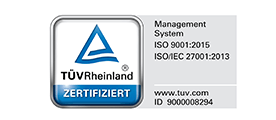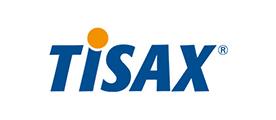Digital Customer Engagement
Digital transformation is creating new challenges in the interaction between companies and their customers. Today, they expect an individual, exciting and consistent shopping & service experience – regardless of the channel. It’s not enough to add a digital commerce platform to your offline business. You need efficient, digital and integrated customer communication without system breaks and manual intervention. To get a holistic customer view, you need to identify the necessary data from an ever-increasing number of on-premise and cloud applications and bring it together while complying with relevant data protection requirements. This is the only way you can answer customer inquiries immediately and competently and provide tailored offers across all channels.
The customer lifecycle is digital
We ensure project success in your digitization projects: from strategic goal formulation and enterprise architecture to tenders, technical conception and implementation management to market launch. We connect the digital world with your offline business and align your IT strategy with the requirements and needs of your customers. Together with your experts, we identify the relevant functionalities along individual customer journeys – so that you can offer your customers unique shopping and service experiences. When designing your business and IT architecture, we consider future-proof approaches from microservices to cloud. We create cost-effective solutions tailored to your needs and ensure the functional interaction between enterprise backend and customer frontend.
Your contact person


Our partners
Know-how, frameworks and assets for your project success
At Ventum, we combine experience with customer lifecycles from a wide range of industries. We’re not about visions – with our expertise in digital transformation, we design tangible solutions for you that work. We have also incorporated our know-how into frameworks and tools that make our projects more efficient and your solutions even more successful. The result: thanks to digital customer engagement, your customers become loyal brand ambassadors.
Frequently asked questions about agile transformation
In an agile transformation, a company or organization fundamentally changes its way of working and corporate culture in order to establish agile principles and working methods. In this context, agility refers to an organization’s ability to adapt quickly, react flexibly and continuously improve its processes, products and services.
Components of agile transformation include
- Changing the culture
- Change in working methods
- Adaptation of processes
- Training and development of employees
- Change in leadership
- Continuous improvement
Agile transformations can take place in different industries and organizations. They are often initiated in response to the need to remain competitive in a rapidly changing market environment. However, an agile transformation and thus a certain change process is also associated with challenges and requires a strong commitment from executives and management as well as careful planning and implementation.
The duration of an agile transformation can vary greatly and depends on several factors, such as the size and complexity of the organization, the existing culture and way of working, the willingness of managers and employees to change and the specific goals of the transformation. It should also be noted that every department must be involved in the change process.
Overall, the change process of an agile transformation can take anywhere from a few months to several years. It is important that the organization views the process as a long-term investment in order to reap the benefits of agility. To accelerate the transformation process, agile coaches or consultants can be brought in to contribute proven methods and experience.
Agile process models are methodical approaches for the planning, development and management of projects and tasks based on agile principles. These models emphasize flexibility, collaboration, customer orientation and continuous improvement. The best-known frameworks are probably Scrum and Kanban.
With Scrum, the focus is on regular, time-limited work phases, known as sprints, in which a functional product increment is created. The framework includes clear roles (Scrum Master, Product Owner, Development Team) and events (Sprint Planning, Daily Stand-up, Sprint Review, Sprint Retrospective).
Kanban is an agile model that focuses on visualizing the work process and limiting work in progress. Teams typically use a Kanban board to track the progress of tasks and optimize the flow of work.
Other agile frameworks include Extreme Programming (XP), Lean Software Development, Crystal, Feature-Driven Development (FDD), Dynamic Systems Development Method (DSDM) and Agile Unified Process (AUP). These frameworks are more suitable for smaller teams.
In order to align a large organization as a whole in an agile way, these frameworks must be scaled. Here, too, there are ready-made models such as SAFe (Scaled Agile Framework). There is no such thing as a “perfect” framework – rather, the selection of a suitable model depends on the specific requirements of a project or organization. Each model has its own principles, practices and tools that can be used flexibly and adapted to the needs of your company.
Scrum and agility are two terms that are often used together but have different meanings and applications. The main difference is that agile is a general philosophy or mindset, whereas Scrum is a specific method used within this agile framework.
Agility is a fundamental mindset that describes the ability of an organization or team to adapt quickly to changing requirements and circumstances. Collaboration, customer focus, flexibility and continuous improvement are promoted through agility. Agile principles are anchored in various methods and frameworks.
Scrum is one such specific framework. It is used to organize and manage complex projects or tasks. The focus is on regular, time-limited work phases, known as sprints, in which a functional product increment is created. The framework includes clear roles (Scrum Master, Product Owner, Development Team) and events (Sprint Planning, Daily Stand-up, Sprint Review, Sprint Retrospective). Scrum aims to promote transparency, control and adaptability in a team and to support continuous improvement. In addition to Scrum, there are numerous other agile methods and frameworks that can be used depending on the specific requirements and objectives of a project or team.
If an organization has certain goals and challenges that can be addressed effectively with agile methods, an agile transformation can make sense. Factors that speak in favor of an agile transformation are, for example
- Fast-moving industries
- Complex projects
- Customer orientation
- Improved collaboration
- High speed of change
- Continuous improvement
- Development of innovative products
- Employee participation
It is important to note that an agile transformation is not suitable for every organization or in every situation. It requires a careful planning process and a willingness to rethink existing working methods and cultures. Before an agile transformation, we therefore work with you to carefully evaluate your specific goals, challenges and organizational requirements to ensure that agility is the right approach.
Arrange a non-binding initial consultation now
- Strategic, professional & technical support in digital change
- Pragmatic, creative & excellent to the goal
- Methodical, professional & technological expertise


TISAX and ISO certification for the Munich office only